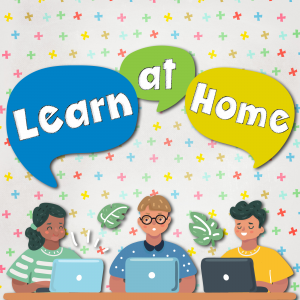
This post is part of a blog series: 9 Strategies for Successful Reading
If you haven’t read the other posts in the series, please read #1: Prepare, #2: Making Connections and Background Knowledge, #3: Asking Questions, #4: Prediction, #5: Drawing Inferences, #6: Determining Importance, #7: Creating Mental Images, and #8: Repairing Understanding.
Have you ever read a few pages in a book or several paragraphs in an article and then realize you don’t remember what you just read? What do you do? Most experienced readers use strategies like re-reading. We recognize when we’ve either lost focus or are reading something challenging for us. Inexperienced readers often don’t have that level of self-awareness. When they get stuck, they believe the reason they don’t understand a text is they are not good at reading. They do not know that a solution is to periodically check-in with themselves to see if they understand what they are reading.
One important strategy for successful reading is Checking In. This is a fairly sophisticated strategy—it relies on self-monitoring which can be difficult for kids, especially young ones. It can take time to master.
Strategy #9: Checking in
There are two basic levels of checking-in. At the word level and the general comprehension level.
Words
This is when your young reader comes across an unfamiliar word. If they misread a word, have them stop to ask questions: “Did that sound right?” “Did that sound like a word people use in that context?” You can re-read the sentence out loud with the word they used and ask them again if it sounded right. Most kids can hear when a word doesn’t sound right. After a while, they will self-correct.
As they progress in reading, your young reader will exhibit a few behaviors that alert you they are checking-in. This is what you want!
What does it look like when your child checks in?
Stops reading
This is one of the easiest ones to spot. If your child is reading out loud and encounters a word they have misread, they will often stop or falter. If they are familiar with some repairing strategies, they can try them here, like re-reading or looking for context clues.
Makes a face
If you see a frown on your child’s face when they are reading either out loud or to themselves, this often means they are struggling with the text. Either they are stuck on a word or perhaps an entire section has become troublesome. Remember this can be a good thing! It means your child is not simply plowing through the text, but recognizes something is not working.
Looks at you
These appeals to you (the more experienced reader), means your child does not know a word. When kids know some of the strategies we’ve gone over in this series, they might try those and then, if those don’t work, they’ll look at you or whoever is helping them. Sometimes a word is so unfamiliar, they are at a complete loss. You can almost feel it! It’s like they’ve run into a wall. They will ask for help.
All of these are good signs because it means your young reader is aware that they misread a word or that they do not understand what they are reading. Often, struggling readers will power through troublesome texts without even realizing they don’t understand what they are reading. One way to become a confident reader is to know when you are stuck.
At the general comprehension level, the best way to teach and encourage checking-in is to read with your child and then stop them after a few pages or even a few paragraphs. You can ask them questions about the text or you can have them ask questions about what they read.
If you’ve been using the other strategies, like making connections and prediction, ask them about those. If it is a textbook or article, they can remind themselves of the author’s purpose. Inexperienced readers can get lost in their reading and it helps to pause and ask why they are reading. Is it to gain information about a topic? Is the author trying to persuade them? Or is it entertainment?
When kids are self-monitoring and checking in, it means they are becoming an active participant in their learning. That is ultimately what we want.
 About this blog series
About this blog series
We’ll go over 9 strategies in this series of blog posts. Your child might not need all nine. One might work magic! If you are a good reader and haven’t ever thought about how you read, you might be surprised to discover you use some or all of these strategies.
And again, a reminder that good readers are not smarter than readers who struggle. Not at all! Many highly intelligent and successful people have struggled with reading, and they became good readers. What they do, and what all good readers do, is develop habits and strategies that help them comprehend what they are reading and give them skills for when they get stuck.
Visit Learn at Home for even more great resources, including:
- Free online tutoring
- Online tools available 24x7x365
- Recommended items from our collection that you can pick up curbside

